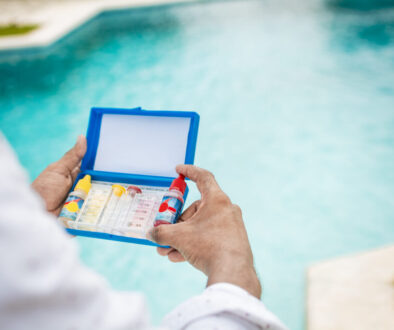Take the Plunge: Seamless Onboarding for Your New Pool Tech Team
Learn how to seamlessly onboard and train existing pool service technicians after acquiring a business for a smooth transition and enhanced productivity.
Onboarding and training existing pool service technicians after acquiring a pool service business is a critical factor in ensuring a smooth transition and maintaining operational efficiency. This process not only helps preserve the established customer base but also enhances employee satisfaction and retention. In this blog post, we will delve into effective strategies for onboarding and training technicians, the importance of clear communication, the role of ongoing support, and how to leverage existing knowledge to foster a positive work environment. By implementing these best practices, you can ensure that both your technicians and customers benefit from a seamless integration.
Understanding the Importance of Effective Onboarding
– Onboarding is the process of integrating new employees into an organization and equipping them with the necessary skills and knowledge to perform their jobs effectively. For pool service technicians, this means familiarizing them with existing customer accounts, service protocols, and company culture.- According to a recent study, organizations with effective onboarding programs see a 50% increase in employee retention and productivity. This is especially pertinent in the pool maintenance industry, where established relationships with customers can significantly impact service quality and revenue.- A well-structured onboarding process provides technicians with an understanding of their roles and responsibilities, leading to improved job satisfaction and performance. For example, if a technician is familiar with the history of a particular account, they can offer personalized services that enhance customer trust and satisfaction.
Communicating Changes Clearly
– One of the most significant aspects of onboarding is communication. Clear communication minimizes confusion and helps set expectations for technicians during the transition. A common pitfall in mergers and acquisitions is failing to communicate changes adequately, which can lead to frustration and disengagement among staff.- Host an introductory meeting with all technicians to discuss the acquisition. During this meeting, outline the vision for the business moving forward, any changes in company policies, and how their roles may evolve. This transparency fosters an environment of trust and collaboration.- Regular updates are essential as well. Consider adopting a communication platform where technicians can access information, ask questions, and share feedback. This could include a dedicated group chat or an internal newsletter to keep everyone informed about ongoing developments, training schedules, and company goals.
Implementing Comprehensive Training Programs
– Training should be tailored to the specific needs of your existing technicians while also introducing them to any new systems or protocols that come with the acquisition. A comprehensive training program covers technical skills, customer service best practices, and safety regulations—crucial elements for maintaining high-quality service.- You might consider developing a mentorship program where experienced technicians guide newer members through the learning process. This approach not only enhances skill development but also fosters camaraderie among the team.- Additionally, make use of online training resources and tools. Many platforms offer training modules that technicians can access at their convenience, allowing them to learn at their own pace. This is particularly beneficial for balancing training with their existing workload.
Encouraging Team Collaboration and Integration
– Fostering a collaborative environment is essential for the successful integration of existing technicians. Encourage teamwork by organizing team-building activities or workshops that allow technicians to bond and develop relationships.- Consider implementing cross-training programs where technicians can learn about different roles and responsibilities within the company. This exposure helps create a well-rounded team capable of stepping in for one another as needed, improving overall efficiency.- Recognize and celebrate team achievements, big or small. Acknowledging hard work and dedication reinforces a positive culture and motivates technicians to excel in their roles.
Providing Ongoing Support and Resources
– Onboarding does not end after the initial training period; ongoing support is essential to ensure that technicians continue to develop their skills and feel valued. Regular check-ins or one-on-one meetings can help identify any challenges they may face and provide opportunities for feedback.- Create a resource hub where technicians can access manuals, FAQs, and troubleshooting guides related to pool maintenance. This empowers them to solve problems independently while knowing they have the support of management if needed.- Consider offering workshops or refresher courses periodically to keep technicians updated on industry best practices and emerging technologies. These sessions promote continuous learning and help technicians stay engaged.
Utilizing Existing Knowledge and Experience
– When onboarding existing technicians, it’s crucial to acknowledge and leverage their prior experience. Encourage them to share their insights and techniques that have worked well in the past, facilitating a culture of knowledge sharing.- You might also consider conducting a skills inventory to understand the strengths and weaknesses within your team. This information allows you to tailor training programs effectively and assign roles that align with each technician’s expertise.- By recognizing the value of your technicians’ past experiences, you create a sense of belonging and investment in the new business, which can lead to higher job satisfaction and retention.
Assessing and Adjusting the Onboarding Process
– After implementing your onboarding program, it’s essential to assess its effectiveness continually. Gather feedback from technicians about their onboarding experience and identify areas for improvement.- Use surveys or informal discussions to gauge how well technicians feel they have been equipped for their roles. This feedback can help refine your training program and ensure it meets the evolving needs of your team and business.- Be open to adjusting your onboarding process as necessary. In a dynamic industry like pool maintenance, staying flexible and responsive to technician needs can significantly impact overall success.
Setting Clear Goals and Expectations
– Establishing clear goals and expectations helps technicians understand what is required of them and how they can contribute to the success of the business. When technicians are aware of performance metrics and customer service standards, they are more likely to strive for excellence in their work.- Consider implementing a performance review system that provides constructive feedback and recognizes accomplishments. This system not only helps technicians stay on track but also motivates them to continue developing their skills.- Align these expectations with the company’s mission and values to ensure that everyone is working toward common objectives. Reinforcing the importance of integrity, reliability, and client success can strengthen team cohesion and performance.
Emphasizing the Importance of Customer Relationships
– In the pool service industry, customer relationships are paramount. Onboarding should include training on how to effectively communicate with customers and handle various situations. This includes teaching technicians how to build rapport and trust, which can lead to long-term client retention.- Role-playing scenarios can be an effective method for training technicians on customer interactions. By practicing various situations, technicians can develop their problem-solving skills and gain confidence in their abilities to address customer concerns.- Encouraging technicians to take ownership of their customer interactions cultivates a sense of responsibility and pride in their work. When technicians feel empowered to make decisions and solve problems, it positively impacts customer satisfaction and loyalty.
Conclusion
In summary, effectively onboarding and training existing pool service technicians after the purchase of a business is essential for maintaining operational efficiency and customer satisfaction. By prioritizing clear communication, comprehensive training, and ongoing support, you can create a positive work environment that fosters growth and collaboration. Emphasizing the importance of customer relationships and leveraging the existing knowledge of your technicians are key components of a successful onboarding strategy. With these practices in place, you can ensure that your pool service business thrives and continues to deliver exceptional service to its clients. Don’t hesitate to reach out to experts in the industry, such as Tower Business Brokers, for assistance in acquiring pool routes and maximizing your investment potential. Start your journey today and empower your technicians to succeed in their roles!



